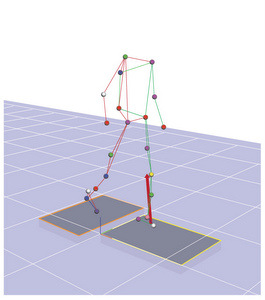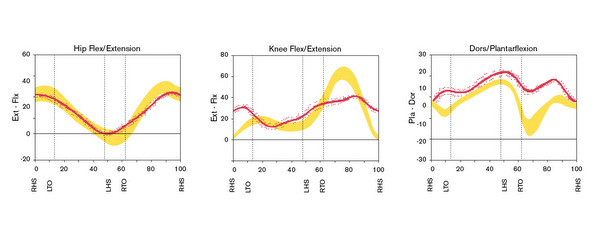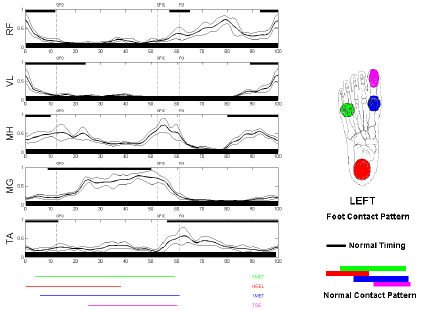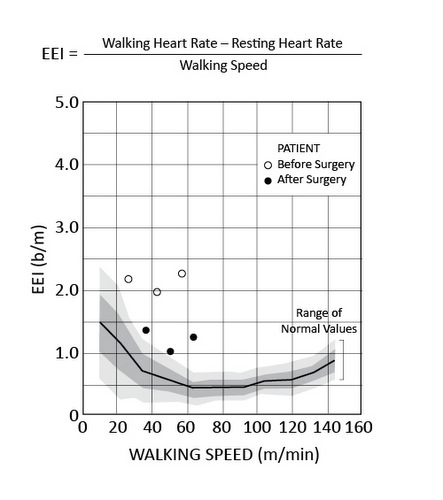Call us today
Contact us to learn more about our Motion Analysis Laboratory or to schedule an appointment.
We offer gait analysis testing for children and adults. This test analyzes how you or your child walks and identifies any abnormal walking patterns.
A gait analysis has several components. Together they provide a comprehensive picture of the various factors contributing to the gait disorder.


Clinical examination. The clinical exam is conducted by the physical therapist to determine the degree of strength, range of motion, tone, and selective motor control in the lower extremity.
Video documentation. You or your child will be videotaped while walking. We will also capture video of your or your child’s standing posture and footwear to assess wear patterns.
3-D gait kinematics and kinetics. Kinematics is joint motion. Kinetics are the forces that act across the joints. This test provides a 3-D picture of how the body moves while walking.
Reflective markers (small balls) are taped onto the legs, pelvis, and trunk (shoulders and hips). Digital cameras record the markers’ movements to measure joint motion at the trunk, pelvis, hip, knee, and ankle. Data of the forces that cross the joints, kinetics, further reveal factors contributing to abnormal movement.
Electromyography (EMG). EMG provides information about how the muscles work while walking. We use the EMG data to see how each muscle functions and how it contributes to the gait abnormality. Pressure-sensitive foot switches tell us when and what part of the foot contacts the ground while walking and allow the EMG data to be correlated with the stance and swing phases of gait.

Energy expenditure. Energy expenditure is the amount of energy a person uses. People with movement disorders typically use more energy while walking than people without movement disorders. This leads to fatigue. The energy efficiency of walking is critical to understanding the severity of the gait disorder.

Please be sure to bring all orthoses and ambulatory aids to your gait analysis. Orthoses may include ankle foot orthoses. Ambulatory aids include canes and walkers.
A typical gait analysis lasts approximately two hours.
After the gait analysis is completed, you and your health care provider will receive:
Please call the medical records department at (650) 497-8079 if you:
Connect with us:
Download our App: